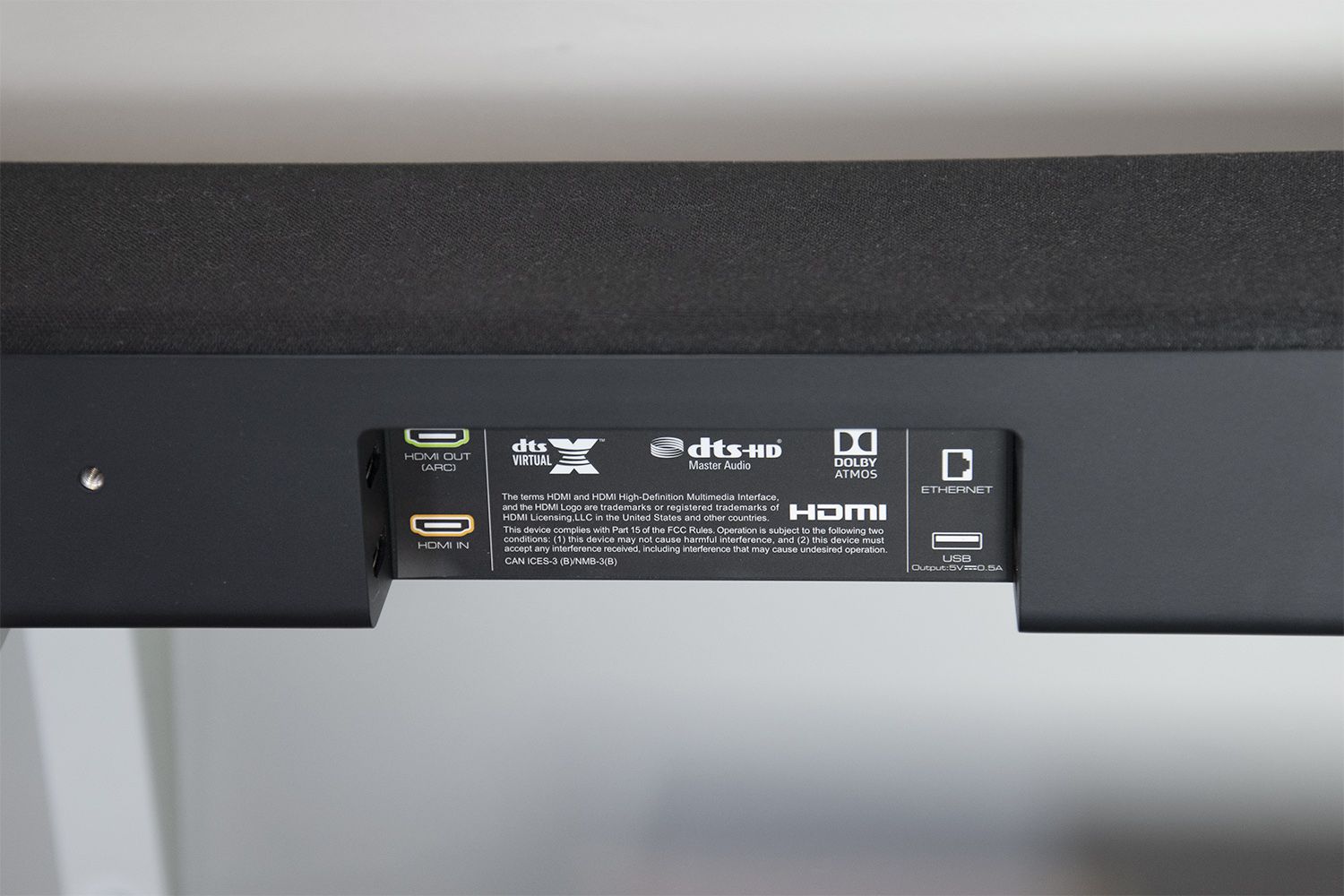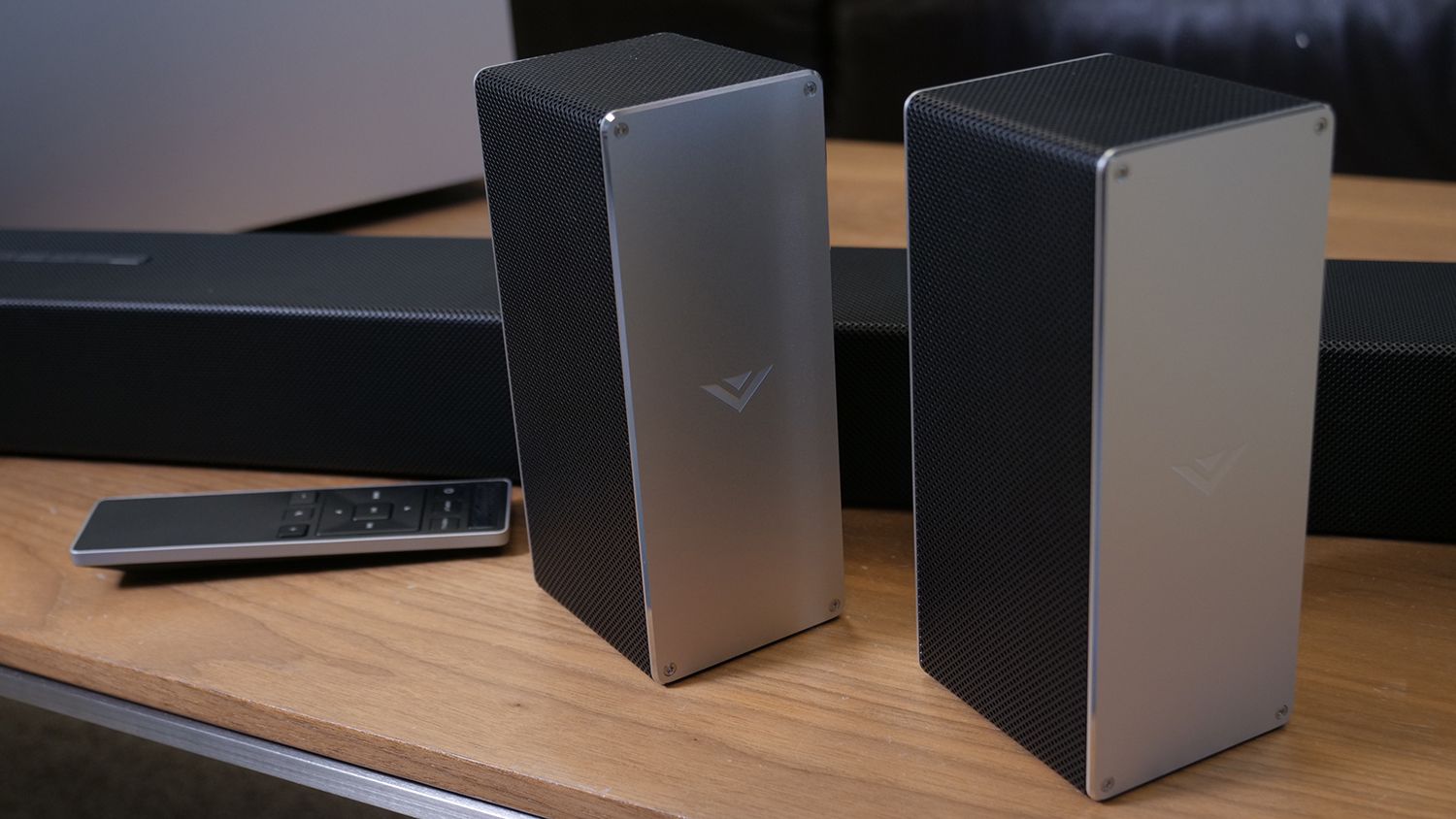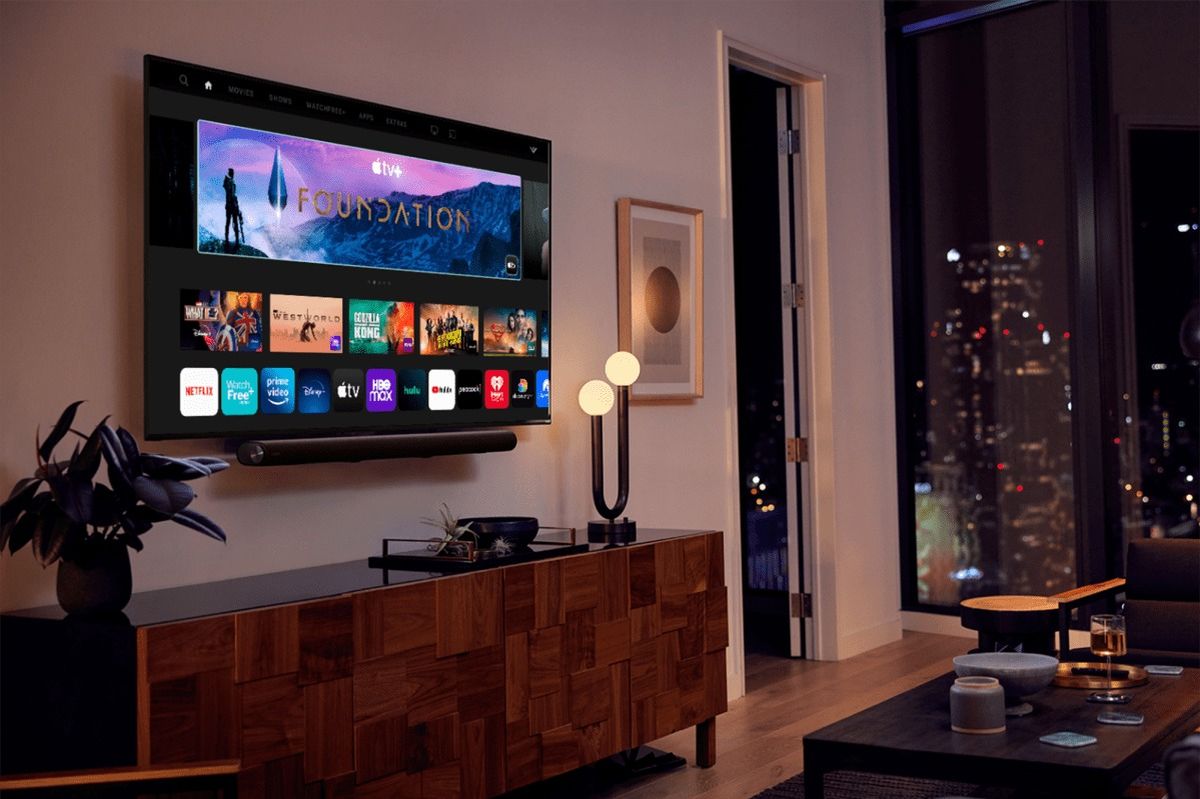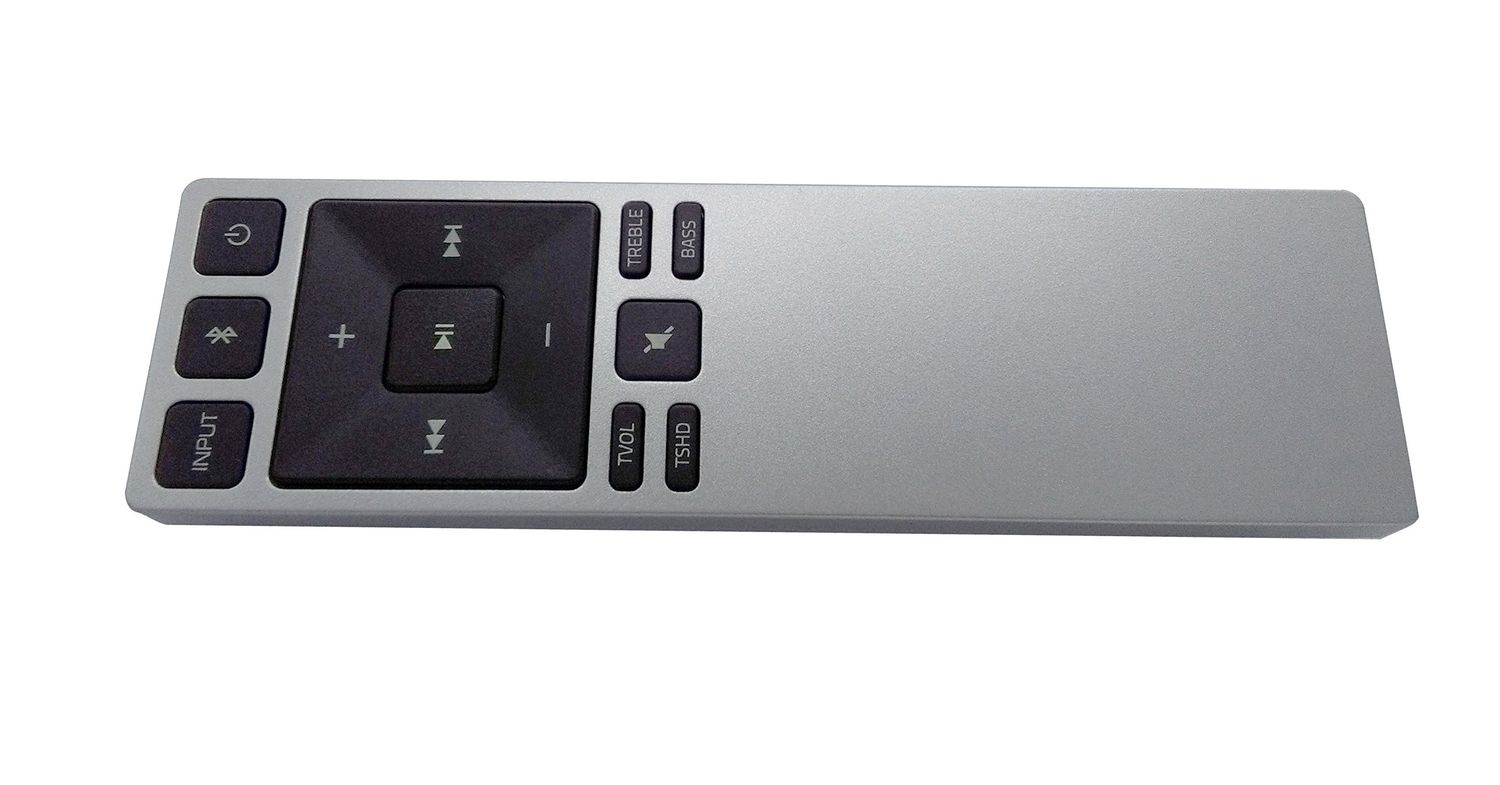Home>Devices & Equipment>Subwoofer>How To Sync Vizio Sound Bar With Subwoofer
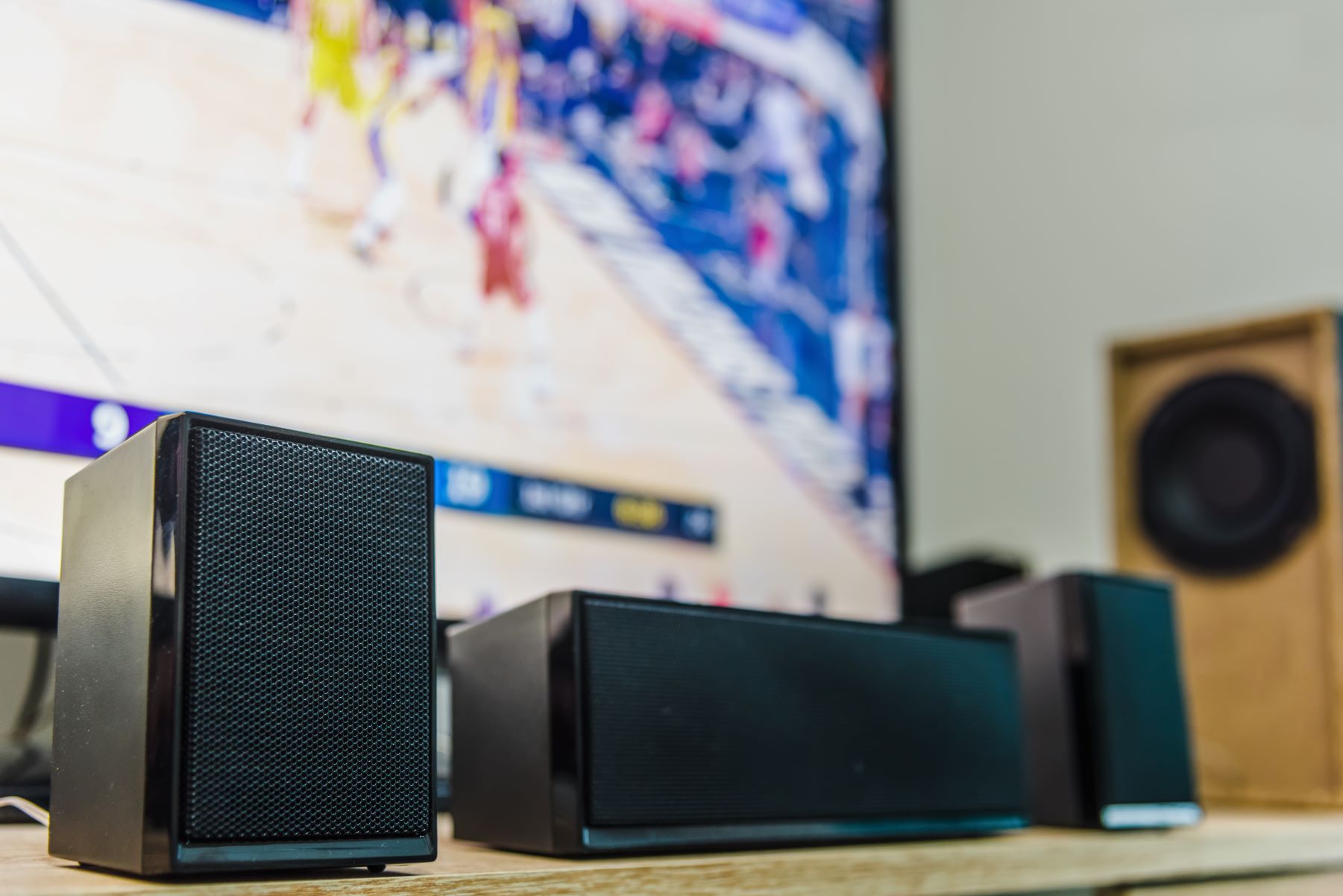

Subwoofer
How To Sync Vizio Sound Bar With Subwoofer
Published: January 22, 2024
Learn how to sync your Vizio sound bar with the subwoofer for enhanced audio experience. Follow our step-by-step guide to easily connect your subwoofer and enjoy powerful bass.
(Many of the links in this article redirect to a specific reviewed product. Your purchase of these products through affiliate links helps to generate commission for AudioLover.com, at no extra cost. Learn more)
Table of Contents
Introduction
Welcome to the world of immersive sound and powerful bass! Subwoofers are an integral part of any audio setup, and when paired with a Vizio Sound Bar, they can take your home entertainment experience to new heights. In this article, we will explore how to sync a Vizio Sound Bar with a subwoofer, ensuring that you get the perfect balance of clarity and deep bass in your audio system.
Vizio is renowned for producing high-quality sound bars that deliver exceptional sound reproduction. With a wide range of models available, Vizio sound bars offer immersive sound for everything from movies and TV shows to music and gaming. When you combine a Vizio sound bar with a subwoofer, you enhance the lower frequency range, allowing you to feel the rumble of explosions, the thump of music, and the depth of cinematic soundtracks.
Synchronizing your Vizio sound bar with a subwoofer is crucial to ensure that both devices work seamlessly together. A properly synced system eliminates any audio delay and creates a cohesive auditory experience. Whether you’re setting up your audio system for the first time or you’ve encountered some syncing issues along the way, this guide will provide you with the necessary steps and troubleshooting tips to get your Vizio sound bar and subwoofer in perfect harmony.
Understanding Vizio Sound Bar and Subwoofer
Before diving into the syncing process, it’s essential to have a solid understanding of the components involved. Let’s begin by exploring the Vizio sound bar and subwoofer, their functions, and how they work together.
The Vizio Sound Bar is a slim, elongated speaker system that is designed to enhance the audio output of your television or other audio sources. It is specifically engineered to deliver a wide soundstage, allowing you to enjoy immersive audio without the need for multiple speakers placed around the room. Vizio sound bars are equipped with multiple drivers and amplifiers to produce clear, powerful sound across a wide frequency range.
A subwoofer, on the other hand, is a specialized speaker that reproduces low-frequency sounds, commonly referred to as bass. It is responsible for adding depth, impact, and richness to the audio experience. Subwoofers are typically larger in size compared to regular speakers, and they are designed to handle low-frequency sounds with precision and power.
When you pair a Vizio sound bar with a subwoofer, you create a comprehensive audio system that covers the full spectrum of sound from high frequencies to low frequencies. The sound bar handles the mid-range and high frequencies, while the subwoofer focuses on delivering deep, rumbling bass. This combination brings your movies, music, and games to life, immersing you in a cinematic audio experience.
To ensure optimal performance and synchronization between the sound bar and subwoofer, they need to be connected correctly and communicate with each other seamlessly. Let’s move on to the next section, where we’ll discuss how to check compatibility and establish the necessary connections for syncing your Vizio sound bar with the subwoofer.
Checking Compatibility and Connections
Before attempting to sync your Vizio sound bar with a subwoofer, it’s important to ensure that both devices are compatible and that the necessary connections can be established. Here are the steps to follow:
- Check compatibility: Start by confirming that your Vizio sound bar and subwoofer are designed to work together. Check the user manuals or product specifications to verify compatibility. If you purchased them as a bundled package, they are most likely compatible.
- Identify connection options: Explore the available connection options on your Vizio sound bar and subwoofer. Common connection types include HDMI, optical audio, RCA, and wireless connections. Choose the connection method that fits your setup and provides the best audio quality.
- Inspect ports and cables: Examine the ports on both the sound bar and subwoofer and make sure they are clean and free from any dust or debris. Also, check the cables for any signs of damage or wear. Replace any faulty or damaged cables with new ones to ensure a secure and reliable connection.
- Positioning: Consider the optimal placement for your subwoofer. Placing it at a distance of about 10 feet from the sound bar and in an open area can help achieve better bass performance. Avoid positioning the subwoofer inside a cabinet or against a wall, as this may affect the sound quality.
Once you have checked compatibility, identified the connection options, inspected the ports and cables, and determined the positioning of the subwoofer, you are ready to proceed with the syncing process. In the next section, we will outline the steps to initiate the syncing process between your Vizio sound bar and subwoofer.
Initiating the Syncing Process
Syncing your Vizio sound bar with a subwoofer is a straightforward process that can be done using the included remote control or through the sound bar’s menu settings. Here’s a step-by-step guide to help you initiate the syncing process:
- Turn on both devices: Ensure that both the Vizio sound bar and subwoofer are powered on and connected to a power source. Make sure they are within range of each other to establish a strong connection.
- Access the sound bar’s menu: Using the remote control, navigate to the sound bar’s menu settings. Look for an option related to subwoofer pairing or syncing. The exact location and labeling of this option may vary depending on the model of your Vizio sound bar.
- Choose the pairing option: Once you have accessed the menu settings, select the subwoofer pairing or syncing option. This will prompt the sound bar to search for available subwoofers to pair with.
- Put the subwoofer in pairing mode: Press and hold the pairing button on the subwoofer until its LED indicator starts flashing or changes color. This indicates that the subwoofer is in pairing mode and ready to be synced with the sound bar.
- Wait for the pairing process to complete: The sound bar will search for the subwoofer and establish a connection. Once the pairing process is complete, the LED indicator on both the sound bar and subwoofer should remain solid or change to a steady color, indicating a successful connection.
- Test the audio: Play some audio content to ensure that the sound bar and subwoofer are working together effectively. Adjust the volume and bass levels to your preference, and enjoy the enhanced audio experience.
If the initial syncing attempt is unsuccessful, don’t worry. In the next section, we will provide troubleshooting tips to help you overcome any syncing issues that may arise.
Troubleshooting Syncing Issues
While syncing a Vizio sound bar with a subwoofer is usually a smooth process, there may be instances where you encounter syncing issues. Here are some troubleshooting tips to help you resolve common syncing problems:
- Check the signal range: Ensure that the subwoofer is within the recommended range of the sound bar. Obstacles such as walls or furniture can weaken the signal. Try repositioning the subwoofer closer to the sound bar to establish a stronger connection.
- Power cycle the devices: Turn off both the sound bar and subwoofer, unplug them from the power source, and wait for a few minutes. Then, plug them back in and power them on again. This may help reset the connection and resolve any syncing issues.
- Confirm wireless frequency: If you are using a wireless connection between the sound bar and subwoofer, ensure that they are operating on the same wireless frequency. Refer to the user manuals for instructions on how to switch frequencies if necessary.
- Double-check settings: Make sure that the subwoofer is set to the appropriate mode or input and that the sound bar is configured to recognize the subwoofer. Check the menu settings on both devices to ensure that they are properly configured for syncing.
- Update firmware: Visit Vizio’s official website and check if there are any firmware updates available for your sound bar and subwoofer. Updating the firmware can often resolve compatibility and syncing issues.
- Try a different connection method: If you are experiencing persistent syncing problems, consider switching to a different connection method. For example, if you’re using a wireless connection, try using a wired connection instead to see if it improves syncing stability.
If you have tried these troubleshooting steps and are still unable to sync your Vizio sound bar with the subwoofer, reach out to Vizio’s customer support for further assistance. They will be able to provide specific troubleshooting guidance based on your model and address any hardware or software-related concerns.
Now that you are equipped with troubleshooting knowledge, let’s delve into advanced tips to optimize the sound quality of your Vizio sound bar and subwoofer setup.
Advanced Tips for Optimizing Sound Quality
To truly elevate your audio experience with your Vizio sound bar and subwoofer, consider these advanced tips for optimizing sound quality:
- Experiment with placement: Explore different placement options for both the sound bar and subwoofer. Small adjustments in positioning can have a significant impact on the sound quality. Place the sound bar at ear level and experiment with subwoofer placement to find the sweet spot that produces the best bass response.
- Adjust audio settings: Dive into the sound bar’s menu settings and fine-tune the audio settings to match your preferences. Adjust parameters such as EQ (Equalizer) settings, surround sound modes, and dialogue enhancement features to optimize the sound for different types of content.
- Use room correction technology: Some advanced sound bars come with room correction technology that analyzes the acoustics of your room and adjusts the audio output accordingly. Utilize this feature to optimize the sound specifically for your room’s characteristics.
- Consider speaker placement: If you have additional speakers in your setup, such as surround speakers or satellite speakers, ensure that they are placed correctly for optimal sound distribution. Follow the guidelines provided by the manufacturer to achieve the best audio balance.
- Utilize sound modes: Many Vizio sound bars offer different sound modes such as Movie, Music, or Game modes. Experiment with these modes to enhance the audio experience for specific types of content.
- Calibrate the subwoofer: Some sound bars allow you to adjust the subwoofer’s settings separately. Take advantage of this feature to fine-tune the bass levels according to your preference. You can increase or decrease the subwoofer’s volume and adjust the crossover frequency to achieve the perfect balance with the sound bar.
- Opt for high-quality audio sources: To fully appreciate the capabilities of your sound bar and subwoofer, choose high-quality audio sources. Streaming services that offer high-resolution audio or Blu-ray discs with lossless audio tracks will provide the best audio fidelity.
By implementing these advanced tips, you will be able to unlock the full potential of your Vizio sound bar and subwoofer, immersing yourself in a captivating audio experience.
As we come to the end of our guide, let’s recap the essential steps and insights discussed so far.
Conclusion
Congratulations! You’ve now learned how to sync a Vizio sound bar with a subwoofer, enabling you to enjoy a truly immersive audio experience in your home entertainment setup. From checking compatibility and establishing connections to troubleshooting syncing issues and optimizing sound quality, you are equipped with the knowledge to ensure seamless integration between your sound bar and subwoofer.
Remember, syncing your Vizio sound bar and subwoofer is a straightforward process that can be done through the sound bar’s menu settings or with the help of the included remote control. If you encounter any issues, refer to our troubleshooting tips, and don’t hesitate to reach out to Vizio’s customer support for further assistance.
Additionally, by implementing advanced tips for optimizing sound quality, such as adjusting placement, fine-tuning audio settings, and utilizing sound modes, you can further enhance the overall audio experience. Don’t forget to utilize room correction technology, consider speaker placement, and choose high-quality audio sources to fully unlock the potential of your Vizio sound bar and subwoofer.
Now, it’s time to sit back, relax, and enjoy your favorite movies, TV shows, music, and games, with rich, immersive sound and powerful bass. With your Vizio sound bar and subwoofer working harmoniously together, every audio moment will come to life, taking your home entertainment to new heights!
Happy syncing and happy listening!

